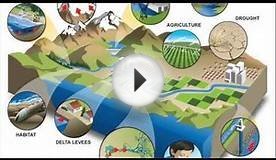Effects of global warming on climate change
 As the planet warms, scientists expect certain areas to receive more precipitation while others will see a decrease in annual rain and snowfall. Though the exact changes vary by location and region, as a general rule currently wet areas will get wetter and dry areas will become drier.
As the planet warms, scientists expect certain areas to receive more precipitation while others will see a decrease in annual rain and snowfall. Though the exact changes vary by location and region, as a general rule currently wet areas will get wetter and dry areas will become drier.
This trend greatly increases the risk of severe drought in certain regions, including major agricultural areas such as the U.S. Midwest, with potentially serious consequences for our food supply.
Changing precipitation patterns also have significant implications for our electricity system. Many power plants require a tremendous amount of water to operate; when there is not enough, or when water temperatures get too high, they must reduce production or shut down entirely. To minimize the risks of disruption, we must make water-smart decisions today that move the country towards low- and no-water electricity sources like renewable energy and energy efficiency.
Global warming is also increasing the number of extreme preciptitation events. Since 1958, the amount of rain or snow falling in the heaviest one percent of storms has risen nearly 20 percent, averaged nationally. This increases the risk of flooding and makes it essential that cities and communities prepare for the increased likelihood of flood events.

